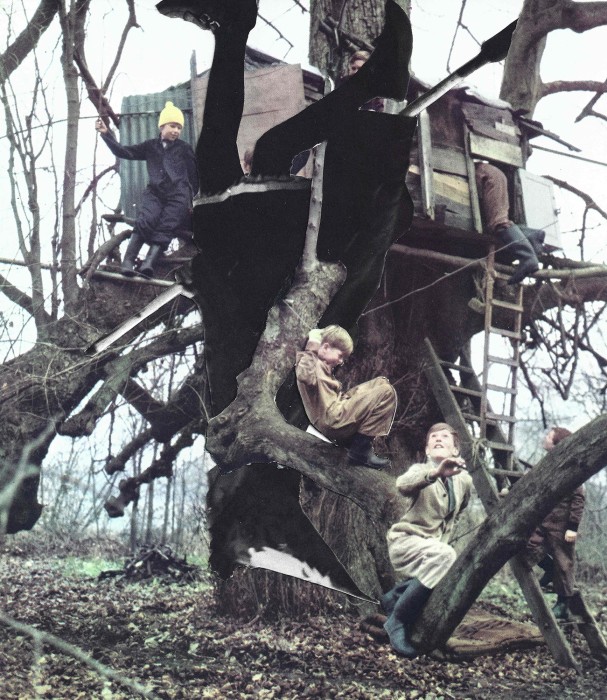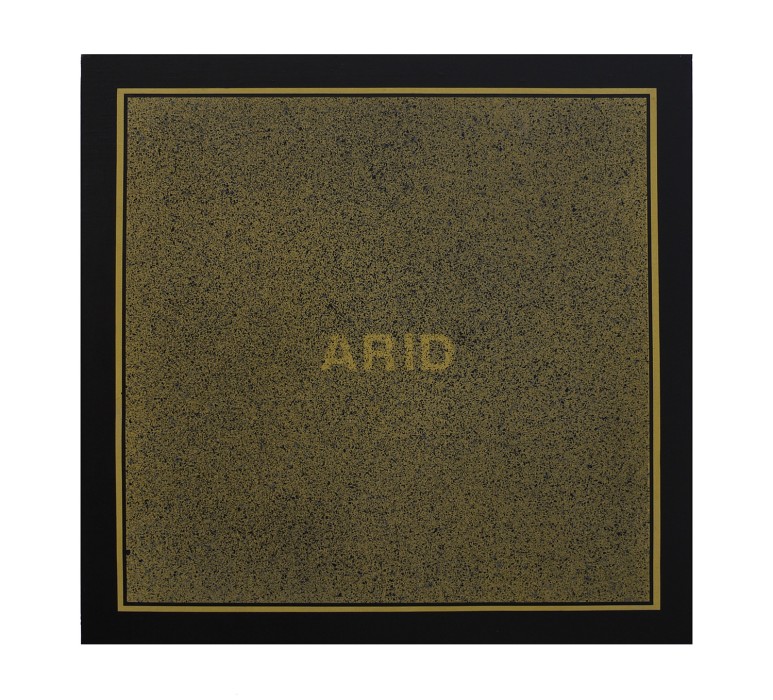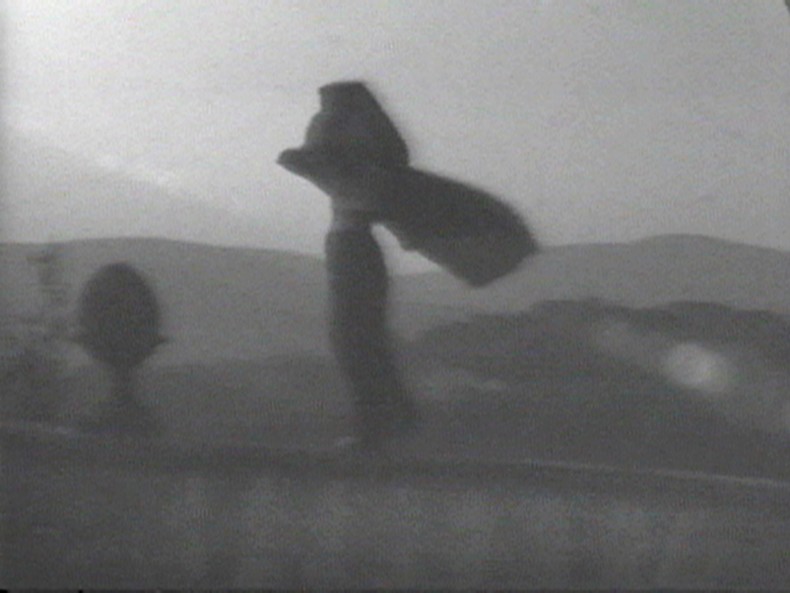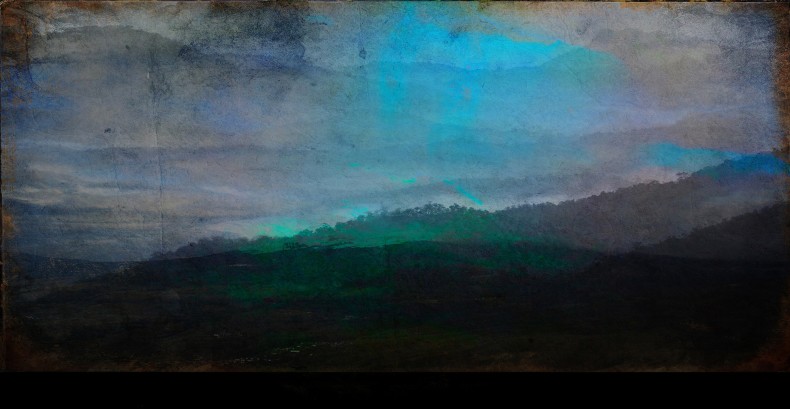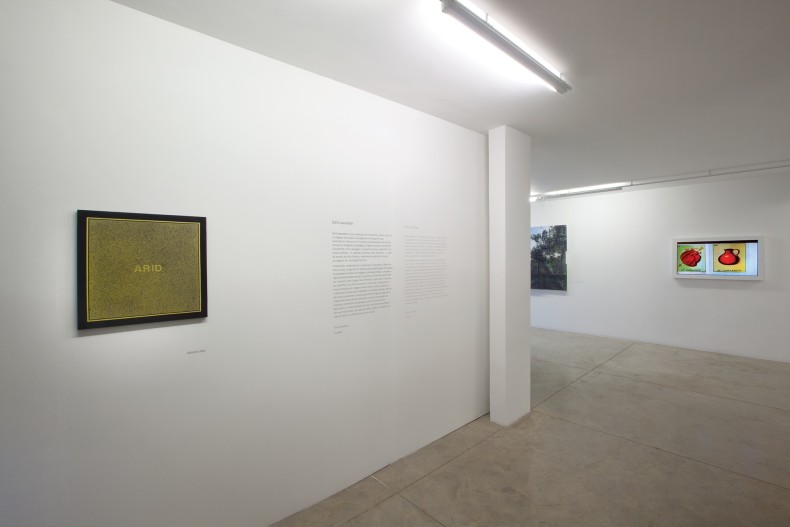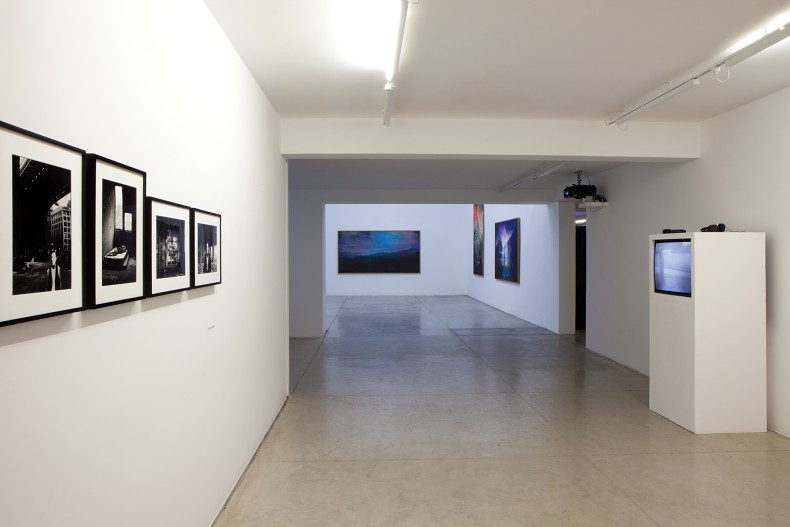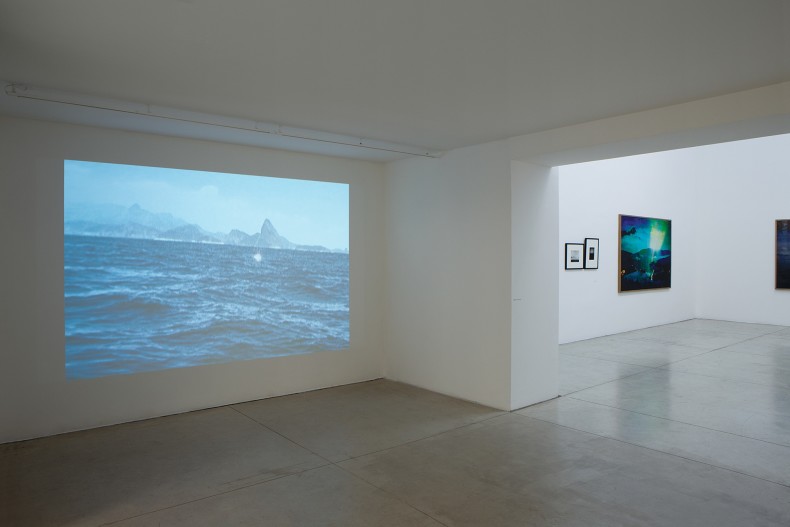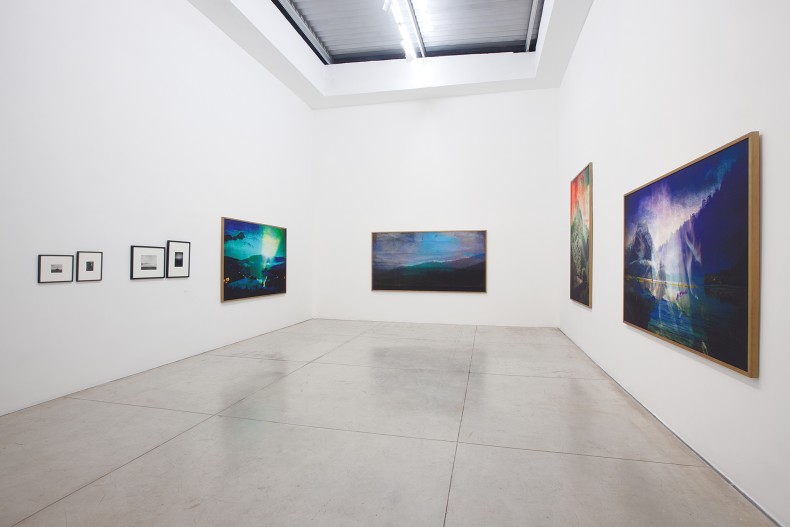Dark paradise is an exhibition of photography, video, painting and collage – both by prominent and emerging artists – which exemplifies contemporary discourse and storytelling through the canon of landscape imagery. The artists either engage physically with the landscape, or capture in a poetic – and only at first glance dark – traces of the past within fictitious, internal or political vistas and historically charged places.
The exhibition was originally created for Clocktower Gallery in New York City, and developed out of a fascination for tracing the tradition of the sublime landscape in contemporary images, a genre that forcefully developed in painting in the late 18th century with masters such as Caspar David Friedrich, who coupled the sublime with awe and fear of nature, and from a search of finding these same emotions in more intimate, local, and poetic images created by artists working in a variety of media. Many of the works in the exhibition exclude human figures and, regardless of scale, evoke feelings of an undefined presence of the past or of a world still undiscovered. The presence of human representation in the chosen works is mostly of a darker nature, indicating a level of fear and personal or social combat.
The large painting-like photographs of New York–based artist Zipora Fried are a recent body of work created from a mix of photographs and hand-painted layers of color. Representing fictitious landscapes, they are contemporary interpretations of the historical sublime landscape genre and vibrate with potential: the dream and terror of the vast and undiscovered territory where anything is possible or the feeling of a divine presence can be felt in rays of light appearing behind the clouds.
The large-scale multiple panel photograph of Carioca artist Marcos Chaves was taken by the artist in the jungle near his home in Rio de Janeiro, where he has been going for walks every week since his childhood. The Pedra da Gávea – pulled to the foreground by lifting the middle panel – is a rock in the forest and a source of many legends for the locals. Whether it be a huge sculpture of an old man, or the myth of the Phoenician inscriptions that allegedly are up there, today this image is also a reflection on the landscape of this iconic “paradise” city finding itself in the eye of a gentrification storm while it prepares to host the upcoming major international sports events.
The selection of photographs by Patti Smith marks the artist’s first time showing of her visual work in Brazil and includes a set of never-before-seen images taken during a 1981 trip to French Guiana, capturing the ruins of prisons and military buildings once built by the occupying leaders. Overgrown in time by the jungle, the scenes still reflect the traces of their (colonial) past, photographed by Smith in her signature, often melancholic, poetic way, as seen in the interplay between the density of the leaves and the appearance of light. The past comes into play even more so in the other images included in the exhibition. The photographs in this group were taken in rural settings where the landscapes, seen through the artist’s eyes, are both heavy with memories of artists of previous times – including Virginia Woolf and Arthur Rimbaud – and double as intimate homages to the artistic souls that have inspired Smith throughout her own career.
Joan Jonas’s video Merlo is an early piece from the artist’s career, in which she performs alone in several dramatic outdoor locations: a rocky gorge, a wind-tossed river, a balcony looking out over a valley. Cloaked in a dark, hooded robe, Jonas uses a long paper cone as a megaphone, singing melodies and keening, animal-like, into the landscape. The cone figure and the specific melodies Jonas uses are recurring motifs in her work, and their use here may be read against the fact that “merlo” is the Italian word for “blackbird”.
Dark paradise is a particularly fitting theme for a video projection by São Paulo-based artist Thiago Rocha Pitta. In O cúmplice secreto, set in the sea near Rio de Janeiro, the viewer seems to be standing on a boat floating on the water while an unidentified object approaches slowly through the waves. Based on the famous passage in Jules Verne’s Twenty Thousand Leagues Under the Sea, in which an expedition is faced for the first time with the creature they were hunting, and it turns out to be the Nautilus submarine of Captain Nemo, the piece makes the viewer’s perception shift from an idyllic tropical setting to an increasingly eerie visual. Unease takes over as one never truly discovers what is approaching the bark.
Nancy Holt’s seminal 1975 Pine Barrens video was shot in the dry wilderness in South-Central New Jersey. The film documents the sandy landscape of the region and captures the feelings and myths of the local people. The most famous of these myths recalls a creature known as The Jersey Devil, a being traditionally described as having hooves – its imprints can be seen in one of the stills – and allegedly born as the thirteenth child of a woman in the 18th century. The images in the video show us the lonely trees in the desolate scenery and the traces left behind by Holt as she meanders through the dunes.
Alice Miceli’s Chernobyl Project consists of a radiographic series of images of the Chernobyl Exclusion Zone, depicting the most affected regions, located on the Belarusian side of the border: images that are imprinted by the very invisible radiation that has contaminated the area since the disaster in 1986. The result is ghostly impressions of an abandoned place – a technological utopia gone awry – yet filled by an invisible matter, apparent in the destruction traces it leaves behind.
Arid (1969) and O bordo da noite (1970), two paintings by renowned Brazilian artist Antonio Dias, are individual studies for the artist’s larger paintings series Project for an Artistic Attitude (1970) created while living abroad in Italy. This period marks a radical change is Dias’s oeuvre, where he moved towards a conceptual approach of the notion of painting: Dias is here thinking of painting as a desert, an empty terrain capable of complete absorption.
The intimate, small-scale collages and drawings by notorious reclusive Irish artist Alex Rose are created from mostly found images, and Rose describes the acts of collecting, assembling, and revealing by destruction as important parts of his process. The haunting images originate from the idea of perhaps removing a “bad” part; a metaphor for trying to protect the featured children from a destructive human presence and an attempt to restore dignity to an inner landscape of innocence, which the artist himself lost too early in life.
Painter, photographer, filmmaker, writer and activist David Wojnarowicz was a prominent figure in the New York art world of the late 1970s and ’80s, and his work is here being shown for the first time in Brazil. Included in the exhibition is the silent short film A Fire in My Belly, one of the artist’s best-known video works: shot on Super 8, the video is a mix of street scenes in Mexico and recurring themes and symbols from his oeuvre such as ants, aggression, animal skulls and religion. Also included is a selection of the iconic portraits of men wearing an Arthur Rimbaud mask, around them and in the historical background the inner-city dystopia: a bankrupt, burned out and dangerous New York reconquered as the playground for the artists of his generation. Wojnarowicz’s more overt activism is visible in Untitled (Between C & D), a poster campaign the artist started against gay bullying, a dark spot in what at times must have felt like a paradise of diversity.
